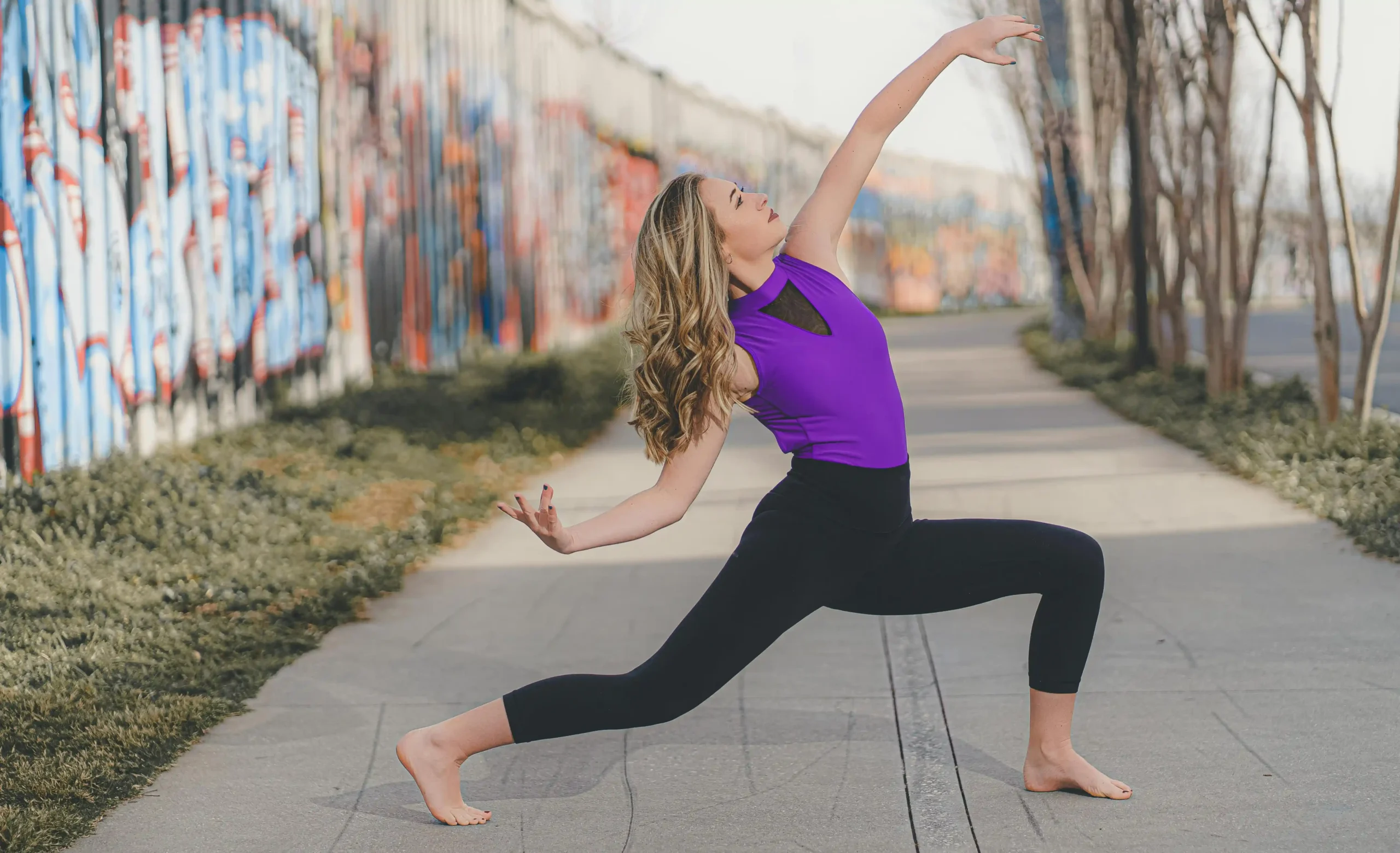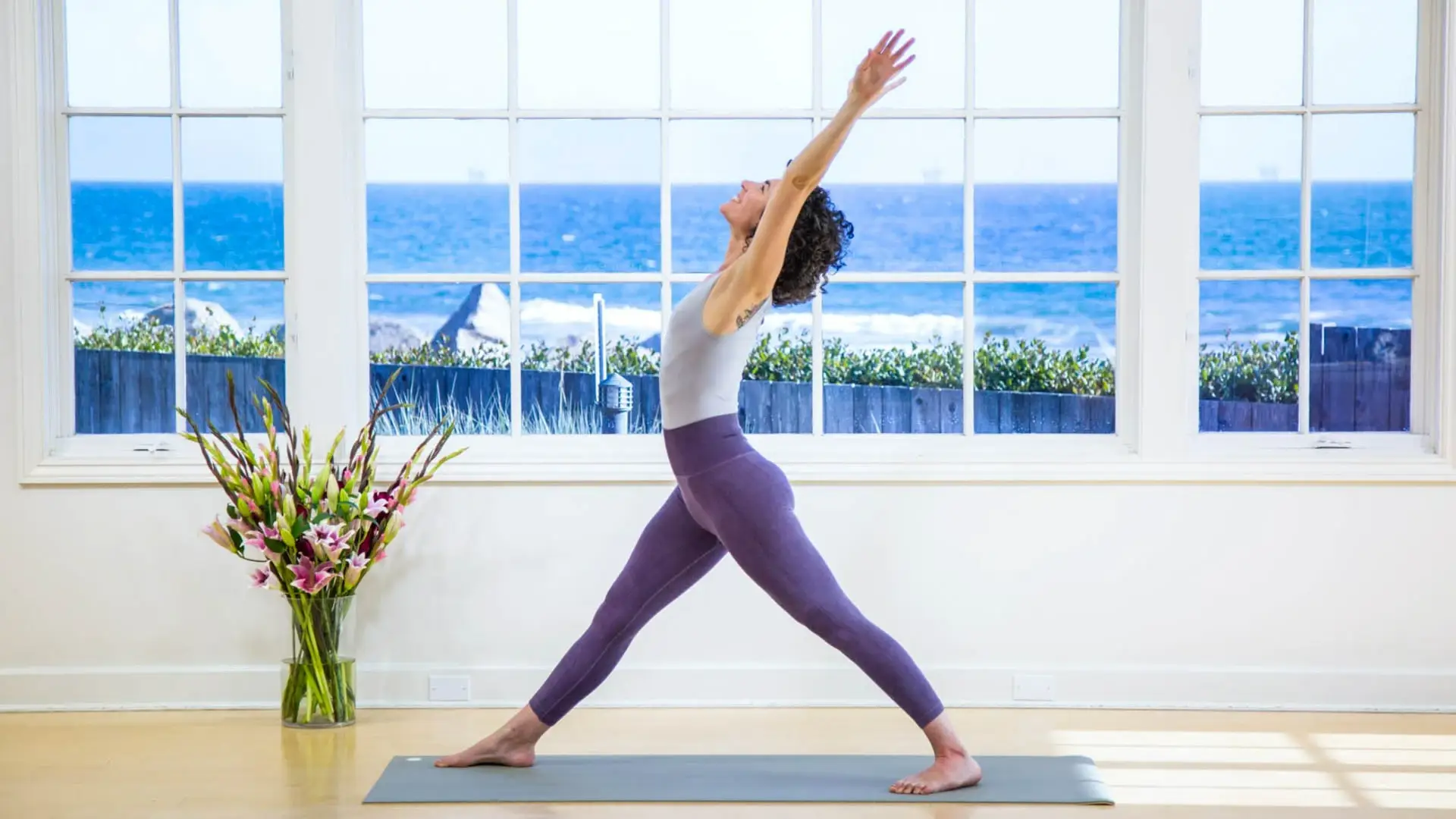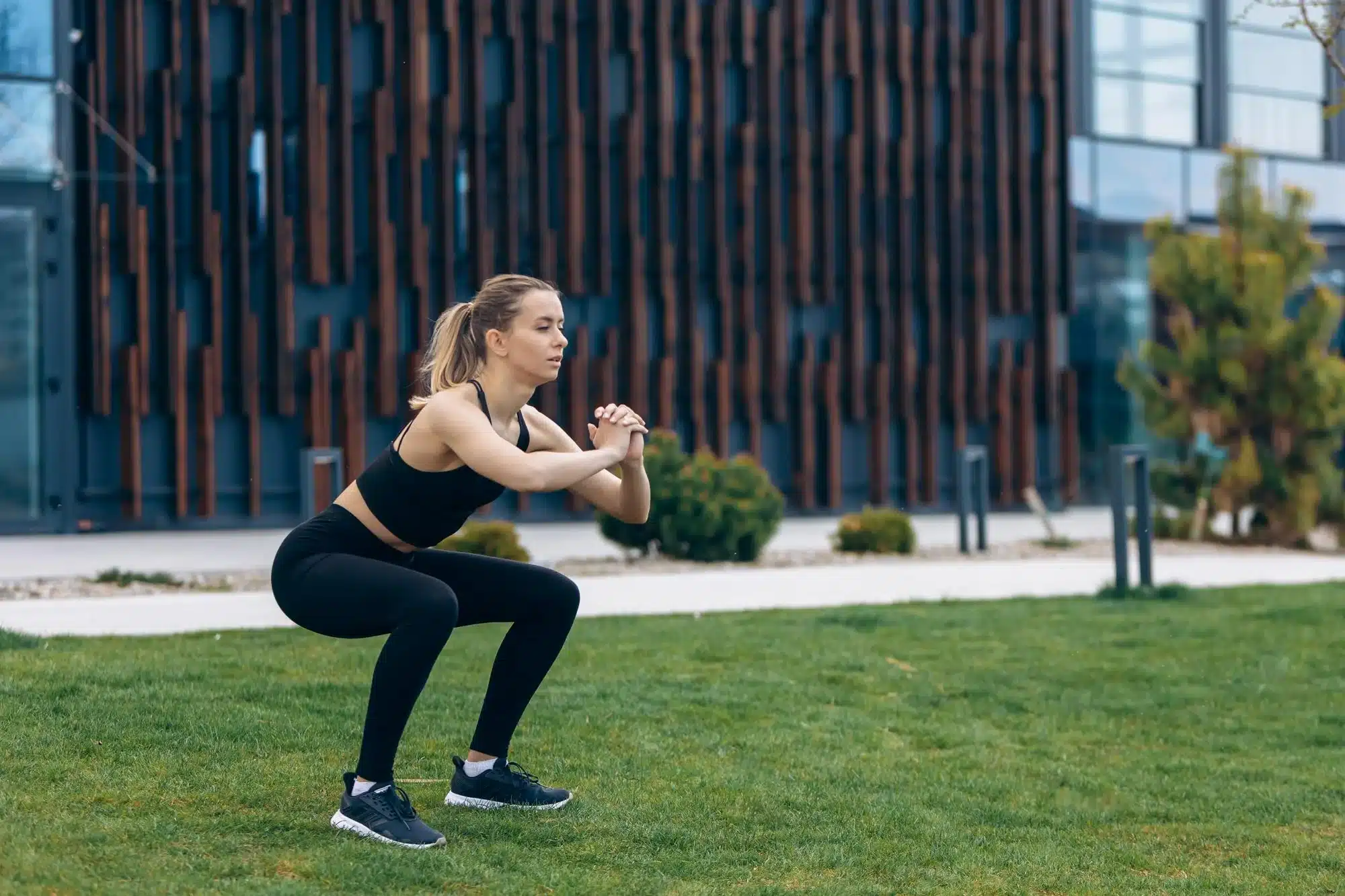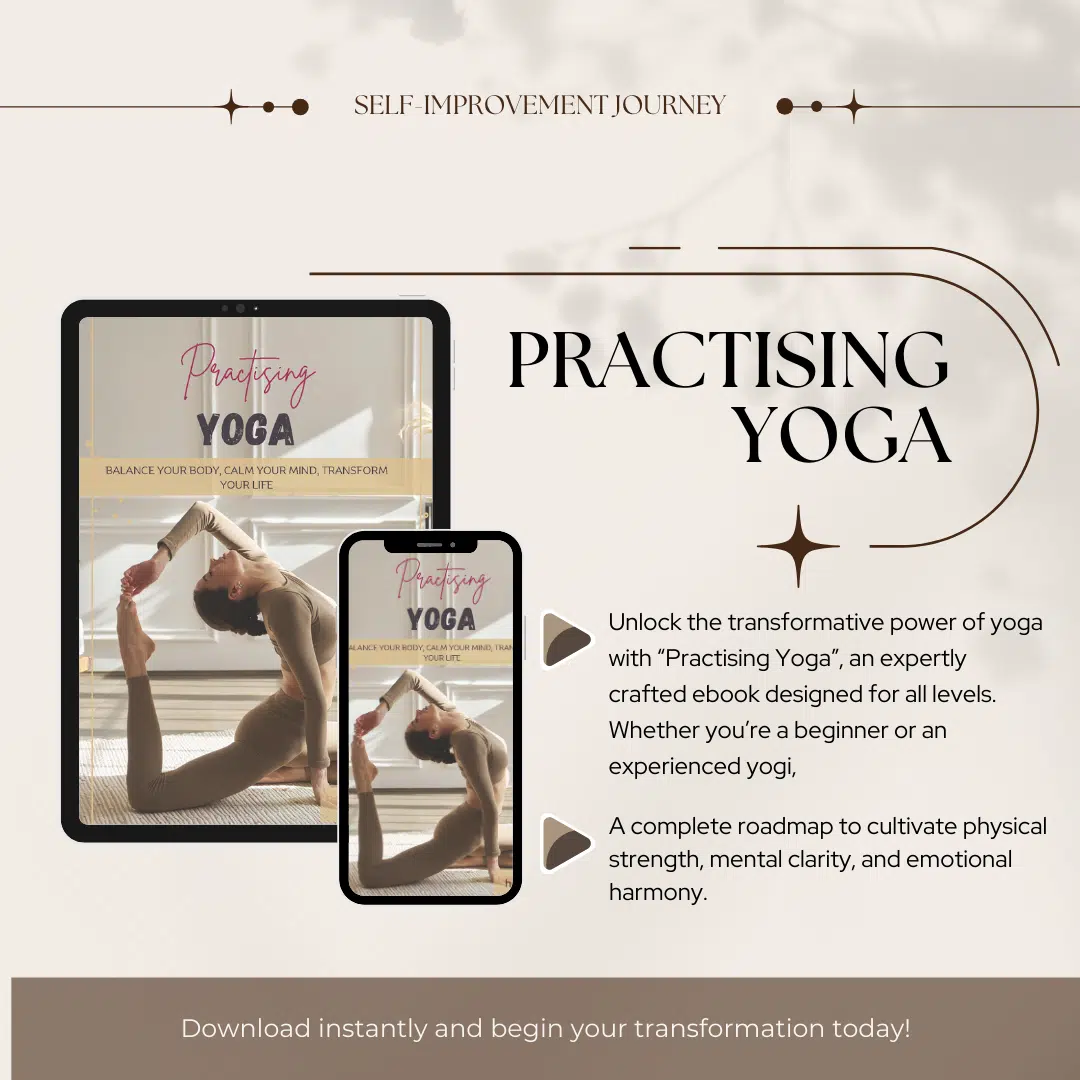Let’s start with a basic question for beginners: which muscles lunges worked? A lunge is a lower body exercise that targets multiple muscle groups, primarily focusing on the quads (quadriceps), hamstrings, and glutes. It is a seemingly simple but dynamic movement that can transform your lower body strength, building strong legs, stability, and athletic performance.
Whether you’re a seasoned gym-goer or just starting your fitness journey, lunges exercises offer a versatile and accessible exercise you can do anywhere, anytime. Let’s delve deeper and explore the incredible lunges’ benefits and the steps towards how to do lunges.
What Muscles Do Lunges Work
Lunges aren’t just about sculpted legs, although let’s be honest, those are a definite perk! They’re a multi-joint exercise that functions like a well-rehearsed play, engaging a team of key muscles to create a strong and functional lower body.
Understanding how lunges muscles worked is key to maximizing your workout. By targeting quads, hamstrings, glutes, and core, lunges offer a complete lower body experience.
Each muscle group plays a specific role, working in unison to deliver impressive results. Here’s the breakdown of the key muscle groups lunges benefits dynamically:
Quadriceps (Quads)

Imagine the quads as the stars of the show. These powerhouse muscles on the front of your thighs are responsible for knee extension and play a crucial role in activities like jumping, squatting, and running.
The Lunges exercises challenge your quads as you push through your front heel to return to standing. This pushing motion effectively strengthens and defines the quads, leading to improved leg power and athletic performance.
Studies published on PubMed Central have shown that the lunge squat effectively increases the strength of the hip, knee, and ankle joints, as well as the quadriceps. This exercise targets multiple muscle groups simultaneously, making it a valuable addition to strength training routines aimed at improving lower body function and stability.
Hamstrings

The hamstrings, located on the backside of your thighs, are equally important for lower body function. These muscles are responsible for knee flexion (bending the knee) and hip extension (pushing your hips back).
During the lunges exercises, your hamstrings work diligently as you lower your body towards the ground. This lengthening and contracting motion helps to improve hamstring flexibility, power, and overall leg strength. Strong hamstrings are essential for activities like sprinting, jumping, and maintaining good posture.
Glutes (Gluteus Maximus)
Don’t be fooled by their simplicity! Lunges muscles worked are surprisingly diverse. The real glutes are the largest muscles in your body, and lunges are a fantastic way to activate them like A-list actors on set. The glutes play a critical role in hip extension, core stability, and overall lower body power.
Performing Lunges benefits your glutes throughout the entire movement, from extending the hip during the lunge to stabilizing your core as you maintain proper form. Strong glutes are essential for activities like climbing stairs, running, and preventing lower back pain.
Studies have indicated that Forward Lunge exercises are recommended not only for rehabilitation purposes but also for performance objectives and strength improvement in the lower limbs.
Calves (Target Muscles for Lunges)
Don’t forget the supporting cast! While often overlooked, the calves, specifically the gastrocnemius and soleus muscles, also play a vital role in lunges. These muscles work as you push off the ground to return to standing, improving balance, stability, and overall leg strength. Strong calves are essential for activities like walking, jumping, and preventing ankle injuries.
Remember, lunges also engage your core muscles for stability throughout the movement. This isometric core activation, where your core muscles contract without significantly changing length, helps improve posture and overall body control. So, next time you perform a lunge, think of it as a full-body experience that strengthens not just your legs, but also your core and stability.
Highly Effective Lunges Benefits
The Lunges benefits go far beyond simply sculpting strong legs. Here’s a deeper dive into the multifaceted advantages lunges offer for various aspects of your physical health and well-being:
1- Improved Balance and Stability
Lunges exercises are unilateral, meaning they work each leg independently. This challenges your body to maintain proper form and balance throughout the movement. As you perform lunges regularly, your proprioception (body awareness) improves, leading to better balance and stability in everyday activities and athletic endeavors. Studies have shown that lunges can be particularly beneficial for improving balance in older adults, potentially reducing the risk of falls.
2- Enhanced Athletic Performance
Lunges are a functional exercise that mimics everyday movements like walking, running, and jumping. By strengthening the key muscle groups involved in these actions, lunges can significantly improve your athletic performance.
Whether you’re a runner aiming for a faster pace, a basketball player wanting to jump higher, or simply someone looking to move with more confidence, lunges can be a valuable addition to your training routine.
3- Boosted Core Strength and Stability
As mentioned earlier, lunges engage your core muscles for stability throughout the movement. This isometric core activation strengthens your core, which acts as the body’s central hub, connecting your upper and lower body.
A strong core improves your posture, reduces lower back pain, and provides a foundation for efficient movement patterns in all your workouts.
4- Increased Flexibility and Range of Motion
Lunges involve a deep lunge position that stretches your hamstrings, hip flexors, and calves. Regularly incorporating lunges into your routine can help improve your flexibility and range of motion in your lower body.
This increased flexibility can not only enhance your athletic performance but also improve your overall mobility and reduce your risk of injuries.
5- Weight Management and Body Composition
Lunges are a compound exercise that works for multiple muscle groups simultaneously. This type of exercise burns more calories than isolation exercises, making lunges a valuable tool for weight management and body composition improvement. Building lean muscle mass through lunges can also increase your metabolism, helping you burn more calories even at rest.
6- Accessibility and Versatility
One of the biggest advantages of lunges is their accessibility and versatility. They require minimal equipment (just your body weight!) and can be performed anywhere. Whether you’re at home, at the gym, or even traveling, lunges offer a convenient way to get a quick and effective lower-body workout.
Additionally, numerous lunge variations allow you to target different muscle groups and challenge yourself as you progress in your fitness journey.
How To Do Lunges With Perfect Form
Lunges may seem like a simple exercise, but proper form is crucial to maximize benefits and prevent injury. Here’s a step-by-step guide to performing lunges with perfect form, along with common mistakes to avoid:
Step 1: Prepare for Takeoff
-
Stand tall with your feet hip-width apart and core-engaged. Imagine pulling your belly button towards your spine for better core stability.
-
Maintain a neutral spine with shoulders relaxed and down. Look straight ahead, keeping your head in line with your spine.
Step 2: The Lunge
-
Take a big step forward with one leg, landing on your heel first. Aim for a stride length that feels comfortable and allows both knees to bend at roughly 90-degree angles when lunged.
-
As you step forward, lower your body down until your back knee nears the ground, but avoid touching it. Ideally, your back knee should be a fist-width distance from the floor.
Mistake to Avoid
Don’t let your front knee cave inward. Your front knee should track directly over your ankle, pointing straight ahead.
Step 3: Power Up
-
Push through your front heel to drive yourself back up to the starting position. Engage your glutes and core muscles during this movement.
-
As you return to standing, ensure your entire foot (both heel and toes) is pushing off the ground for balanced power.
Mistake to Avoid
Don’t hyperextend your front knee at the top of the movement. Keep a slight bend in your front knee for optimal stability.
Step 4: Repeat and Rebound
-
Repeat the lunge on the other leg, maintaining the same controlled movement and proper form.
-
Aim for a balanced number of repetitions on each leg to ensure even muscle development.
Mistake to Avoid
Don’t swing your arms for momentum. Focus on controlled movements and core engagement for better stability and targeted muscle activation.
Bonus Tip: Breathe! Inhale as you lower yourself down, and exhale forcefully as you push back up to the starting position.
Remember
-
Start slow and focus on proper form before adding weight.
-
If you experience any pain, stop the exercise and consult a healthcare professional.
Lunge Variations For Any Fitness Level
The beauty of lunges lies in their versatility. You can easily modify the basic lunge or progress to more challenging variations to target different muscle groups and keep your workouts exciting. Here’s a breakdown of some popular lunge variations:
1-Walking Lunges

-
Muscles Worked in Walking Lunges: Excellent for improving balance, coordination, and core stability.
-
How-to: Take a large step forward with one leg, lunging down as you did in the basic lunge. Push through your front heel to stand tall, then immediately take another large step forward with the opposite leg, performing another lunge. Essentially, you’re walking while lunging.
-
Pro Tip: Maintain a continuous walking motion throughout the exercise.
2-Walking Lunges with Overhead Press
-
Benefits: This variation adds an upper-body challenge, working your core stability, shoulders, and triceps.
-
How-to: Hold dumbbells or a weight plate at shoulder height. Perform walking lunges as described earlier, but while lowering down in the lunge, press the weights directly overhead. Lower the weights back down to shoulder height as you return to standing.
-
Pro Tip: Maintain a controlled movement throughout the lunge and press. Choose a weight that allows you to maintain proper form.
3-Reverse Lunges
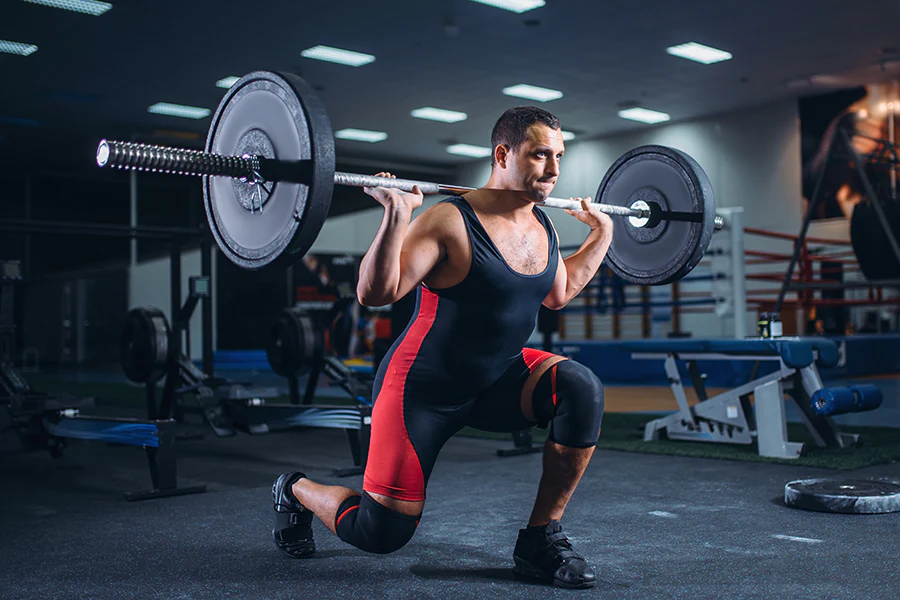
-
Reverse Lunges Muscles Worked: Targets your hamstrings and glutes to a greater degree than the basic lunge.
-
How-to: Stand tall with feet hip-width apart. Take a large step backward with one leg, lowering your body down until both knees are bent at 90-degree angles. Push through your front heel to return to the starting position. Repeat with the other leg.
-
Pro Tip: Keep your torso upright and avoid rounding your back as you lunge backward.
4-Side Lunges
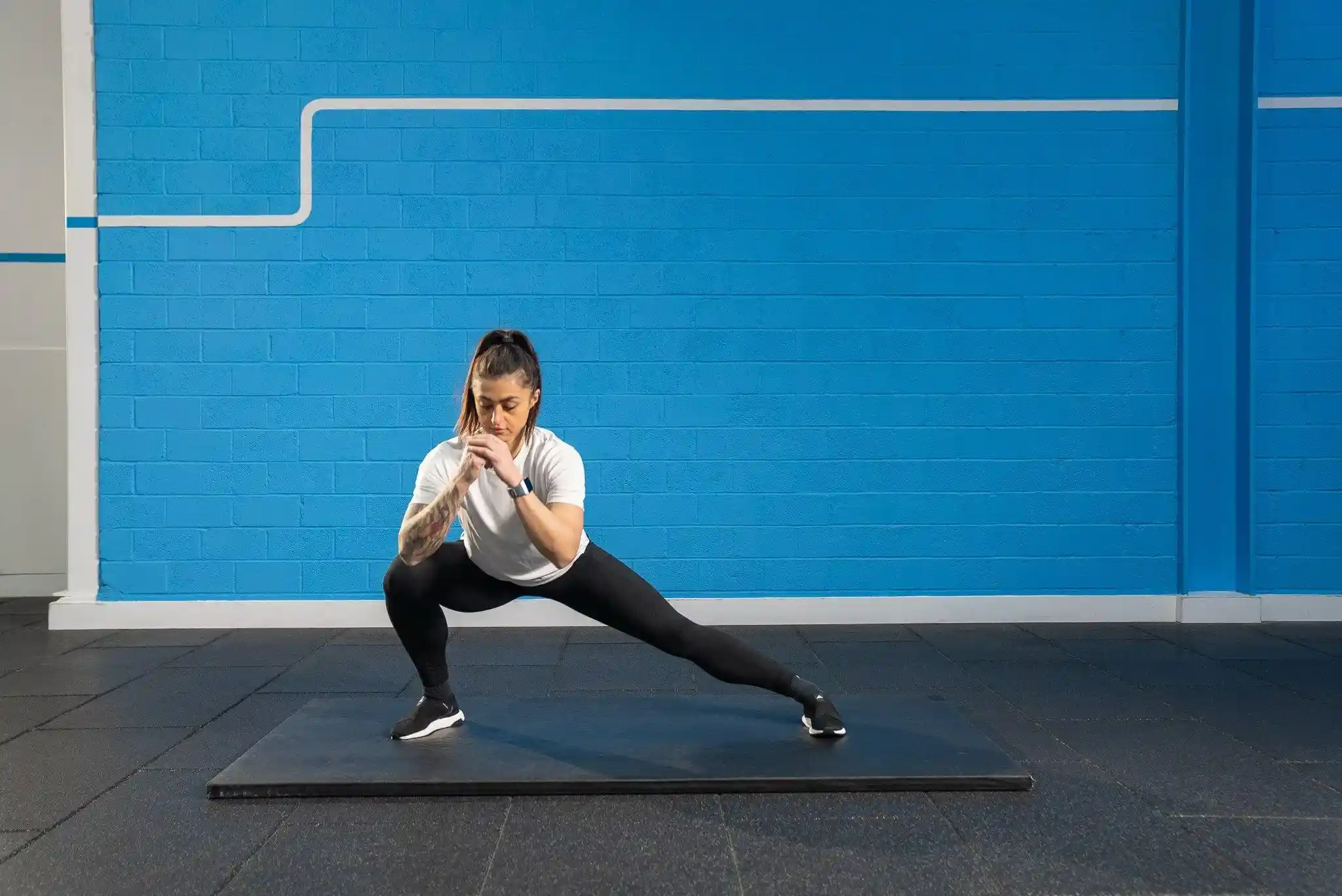
-
Side Lunges Muscles Worked: Works your inner and outer thighs (adductors and abductors) along with your core for improved stability.
-
How-to: Stand tall with feet hip-width apart. Take a wide step to the side with one leg, keeping your toes pointed forward. Lower your body down until your hips sink, ensuring both knees bend at 90-degree angles. Push through your front heel to return to the starting position. Repeat with the other leg.
-
Pro Tip: Focus on keeping your hips square as you lunge sideways.
5-Bulgarian Split Squats
Is knee pain holding you back from squats? This lunge variation offers a fantastic alternative. You can still target similar muscle groups while minimizing stress on your knees.
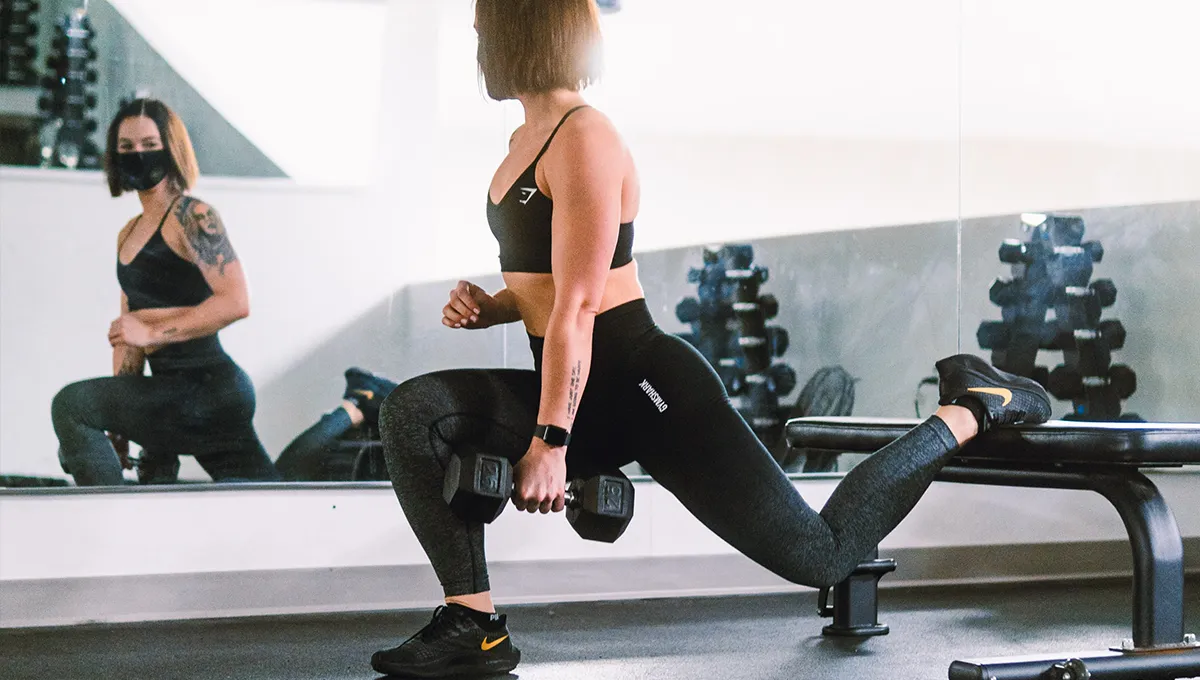
-
Benefits: A unilateral exercise that challenges your balance and builds lower body strength, particularly in your quads and glutes.
-
How-to: Find a sturdy bench or chair behind you. Stand with one leg on the ground and place the other foot behind you on the bench, with your toes resting on the edge. Lower your body down by bending your front knee until it reaches a 90-degree angle. Push through your front heel to return to the starting position. Repeat with the other leg.
-
Pro Tip: Ensure your front knee tracks directly over your ankle and avoid letting it cave inward.
Lunges and Your Core: A Match Made in Fitness Heaven
Lunges might seem like a leg-focused exercise, but don’t underestimate their core-strengthening power! Here’s why lunges are a fantastic addition to your core workout routine.
Here’s how:
-
Maintaining Posture: During a lunge, you need to maintain a neutral spine and upright posture to avoid injury and maximize effectiveness. This requires core muscles like your transverse abdominis and obliques to work isometrically (contract without significant length change) to provide stability throughout the movement.
-
Balance and Control: Lunges are unilateral exercises, meaning they work each leg independently. This challenges your core to maintain balance and control as you shift your weight from one leg to the other.
FAQs
How Many Lunges Should I Do A Day?
The number of lunges you should do depends on your fitness goals, current fitness level, and overall workout routine. For beginners, starting with 2 sets of 10-12 lunges per leg (20-24 total) is a good starting point. As you become more comfortable with the exercise, you can gradually increase the number of lunges or sets.
For general fitness and toning, aim for 2-3 sets of 12-20 lunges per leg. If you’re looking to build strength and muscle, you can increase the number of sets and reps, such as 3-4 sets of 8-12 lunges per leg.
How Many Calories Burned By Lunges?
The number of calories burned during lunges varies depending on factors such as your body weight, intensity of the exercise, and duration. On average, a person weighing around 155 pounds (70 kg) can expect to burn approximately 9-11 calories per minute of performing lunges.
For example, during a 10-minute session of moderate-intensity lunges, you might burn around 90-110 calories. However, if you increase the intensity or duration of your lunges, you may burn more calories.
Conclusion
Lunges are more than just a simple leg exercise – they’re a dynamic movement powerhouse! From sculpting strong, toned legs to improving balance, core strength, and athletic performance, lunges benefits are many for all fitness levels.
The beauty of lunges lies in their accessibility and versatility. Lunges target those muscles that require minimal equipment and can be performed anywhere, anytime. Whether you’re a beginner starting with basic lunges or a seasoned athlete exploring advanced variations, lunges provide a continuous challenge and opportunity for growth.
Remember, proper form is key to maximizing the benefits of lunges and preventing injuries. Focus on controlled movements, core engagement, and maintaining a neutral spine throughout the exercise. Don’t be afraid to start slow and gradually increase weight or add more challenging lunge variations as you progress.

